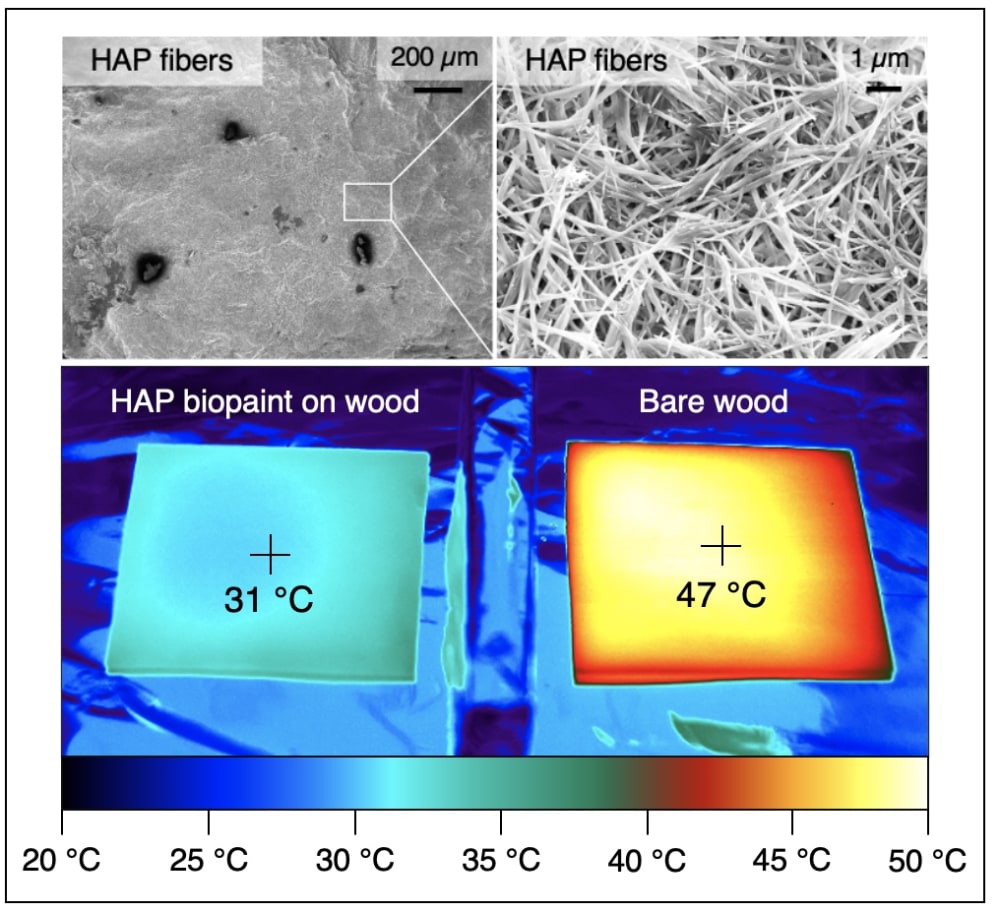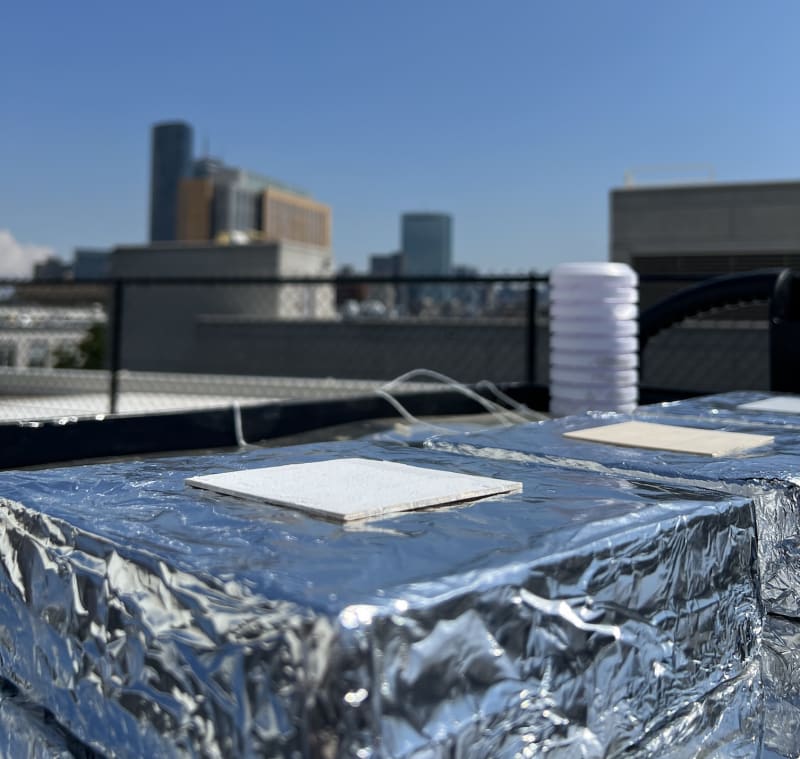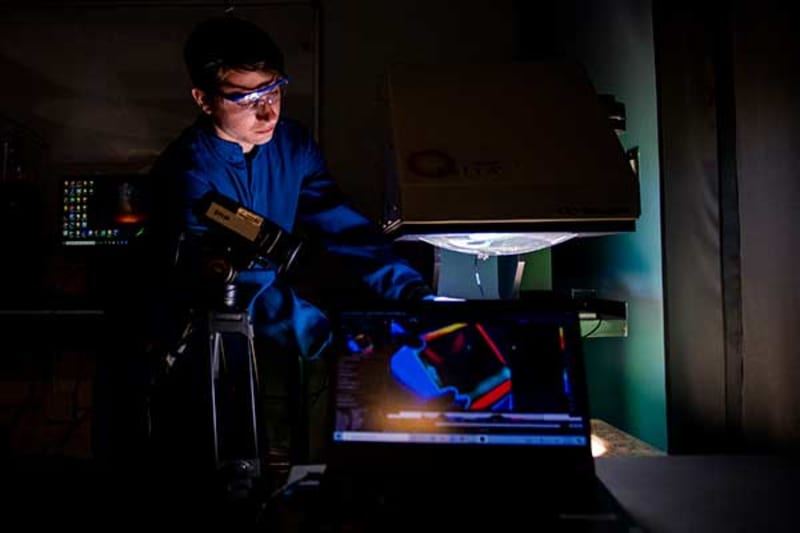

Green-energy startup Planck Energies is developing a nanofibrious biopaint as a passive cooling coating. This product will improve building energy efficiency by reducing reliance on air conditioning systems. Crucially, this product will also offer low-cost cooling for populations in less industrialized, low income, or off-grid regions that cannot rely on A/C systems. This innovation has a wide variety of benefits, including cost reduction, emission reduction, thermal comfort improvement, and heat-related illness and mortality reduction. Inherent fire-retardancy provides safety and durability, and, the recyclability of the product after one life cycle contributes to its green and energy-saving functionality.
The team is studying low-cost synthesis methods for nanofibrous hydroxyapatite, which reflects 99% of solar radiation and radiates 90% of stored heat through the Earth's atmospheric window. This provides 24-hour cooling without consuming electricity. To enhance applicability, the team is working to disperse this material within paint matrices. This challenge requires balancing cost, durability, environmental benignity, and overall cooling performance. Indications of success have been achieved by combining nHAP with a simple oil paint base. The team has found that HAP can be dispersed within this base with minimal optical performance reduction, which is a ubiquitous challenge in the paint and coatings industry. The unique molecular structure of HAP also forms a novel hardened structure after drying, and the proof-of-concept HAP coating achieves far better cooling than incumbent reflective pigments and paints.
The primary market application of the bio-paint is the passive cooling coating industry, with substantial market potential for application on commercial buildings, data centers, refrigerated vehicles, and many other structures. Considering increasingly severe global warming and greenhouse emissions, green buildings and clean-energy transportation tools will maintain a high demand for sustainable, high-efficiency, low-carbon cooling products. Besides excellent cooling, this product's sustainability, biocompatibility, and infrastructure safety features are unique and attractive to users. This product has great opportunities in less-developed regions and low-income communities, where it will be instrumental in enhancing health and quality of life.
As a passive cooling pigment material with indications of simple paint integration, HAP will be easily embedded within the current paints and coatings supply chain. Planck Energies will seek partnerships with existing additive manufacturers (e.g., 3M) and paint manufacturers (Sherwin-Williams, Henkel). This will allow the team to leverage existing channels and the expertise of the established industry. The value proposition to these companies is the enhancement of performance and profitability of their passive cooling product lines. By implementing HAP within their paints and coatings, end users will enjoy enhanced cost savings and carbon footprint reduction compared to the current state-of-the-art. The environmental friendliness and biocompatibility of the pigment materials will attract additional consumers, and the product cost will potentially be reduced compared to incumbents. Crucially, this strategy will grant the startup access to a massive market from day one.
The awarded funds will be used to support the team in developing scalable HAP fabrication processes and evaluating paint formulations that balance durability, applicability, and cooling, and thereby support global sustainable development and equity.
-
Awards
-
 2023 Sustainable Technology Honorable Mention
2023 Sustainable Technology Honorable Mention -
 2023 Top 100 Entries
2023 Top 100 Entries
Like this entry?
-
About the Entrant
- Name:Andrew Caratenuto
- Type of entry:teamTeam members:
- Yi Zheng
- Software used for this entry:No
- Patent status:pending








